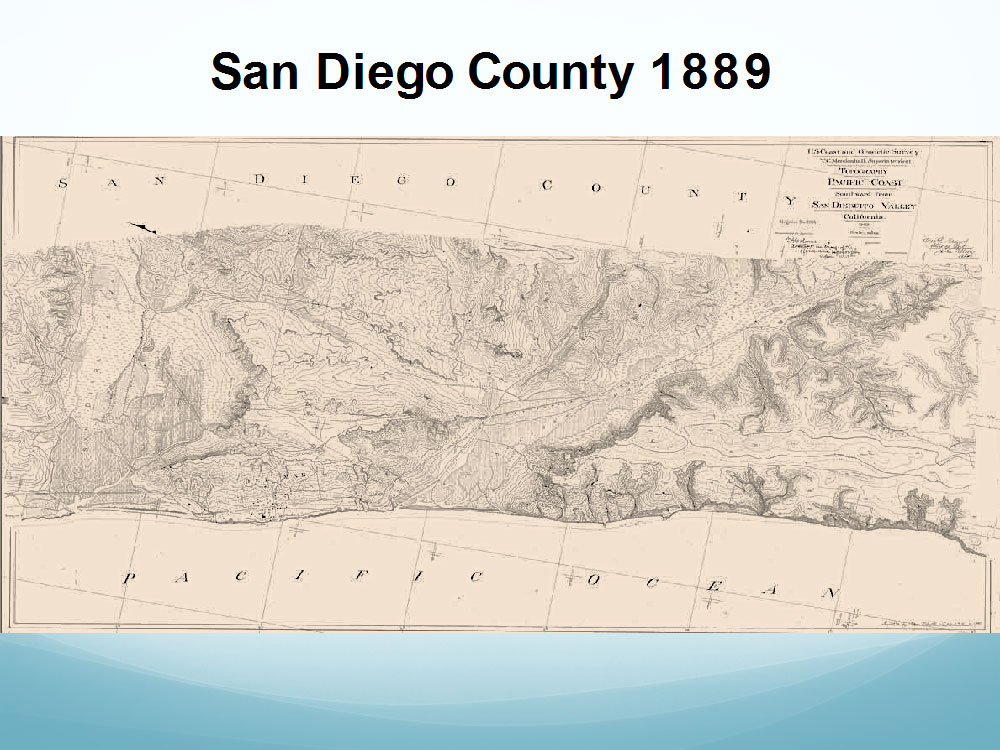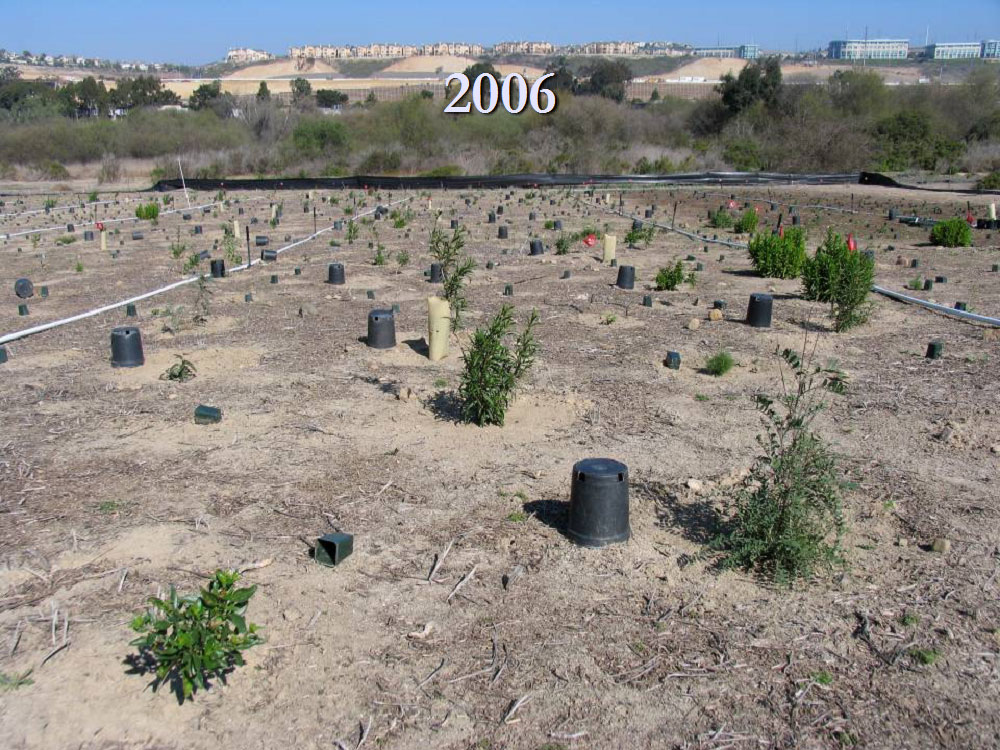HABITAT RESTORATION
Habitat for wildlife is continually shrinking – I can at least provide a way station.
– Peter Coyote
Once a pristine coastal estuary with extensive salt flat and salt marsh, Los Peñasquitos Lagoon has lost over half of its historic habitats as a result of human activities and land use change that have altered native landscapes and modified natural processes operating in both the watershed and within the Lagoon itself. Accelerated sediment input, year-round flows of freshwater from the urban areas within watershed, invasive plant infestations, and poor water quality are the primary drivers, or causes, for the Lagoon’s impairment. These drivers have greatly contributed to impacts within Los Peñasquitos Lagoon that, if left unabated, will continue to degrade its valued resources, ecologic services, and habitats critical to the local and regional survival of sensitive species and migratory birds using the Pacific Flyway. As a result, Los Peñasquitos Lagoon has been placed on the Environmental Protection Agency’s Clean Water Act Section 303(d) list of impaired water bodies with the restoration of its beneficial uses a top priority. The Lagoon is also considered a priority area for vector management efforts at the County of San Diego, since extended inlet closures during spring and summer months can turn the entire lagoon into prime breeding habitat for freshwater mosquitos that can infect humans with West Nile Virus.

Addressing the primary drivers for Los Peñasquitos Lagoon’s impairment in conjunction with abatement of the impacts they generate is essential for the successful and sustainable recovery of the Lagoon’s native habitats and ecosystem services. With this in mind, a comprehensive and watershed-based approach was selected to integrate the update of the Los Peñasquitos Lagoon Enhancement Plan (LPLEP) with Water Quality Improvement Plan (WQIP) developed for the Los Peñasquitos Watershed by the City of San Diego, who took the lead role since their jurisdiction extends beyond 70% of watershed. Both planning documents prioritize the recovery of the Lagoon’s native salt marsh habitat with LPLEP providing the guidance for design and implementation for lagoon improvements supported by load reduction efforts for sediment, bacteria, and dry weather inputs of freshwater to be pursued within the watershed under the WQIP. Lagoon improvement concepts developed and evaluated in the LPLEP used an innovative approach that included public input, stakeholder-driven criteria, baseline analysis of lagoon conditions verified by field investigations, and Habitat Trajectory Modeling using a modified version of the Sea Level Affecting Marshes Model (SLAMM). A preferred lagoon improvement concept was selected to provide the greatest opportunity to provide multi-benefits that include strengthening Los Peñasquitos Lagoon’s resiliency to urban stressors and climate change while facilitating the implementation of sustainable, large-scale salt marsh restoration in an area currently dominated by Festuca perennis (Italian Rye Grass) and brackish habitat. The preferred lagoon improvement concept also meets San Diego County vector management priority needs by facilitating the dewatering of areas consistently inundated by fresh and brackish water that provide preferred breeding habitat for Culex tarsalis. Please refer to for more information about plans and designs for phased, large-scale restoration of native salt marsh and transition zones in Los Peñasquitos Lagoon.








